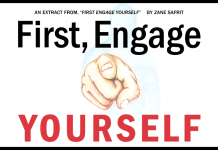
Understanding your contact center costs is vital to successful management and administration of your center. Before we begin the discussion about reducing your cost per call, we first need to make sure that you have contact center costs measurements in place. If you are not actively tracking your costs and trends, it is impossible to know whether any of your change efforts have been successful. Unless you are an Excel power-user, enlist the help of a business analyst who can help you gather, filter and graph data for trend analysis.
Know Your Numbers
Accurately tracking contact center costs involves gathering information from a variety of departments. Engage your human resource department to get a comprehensive report for payroll costs, broken out into regular, overtime, holiday, vacation and personal or sick time. Be sure to identify costs for supervisors, managers, quality analyst, workforce and administrative personnel who support your contact center. Include additional expense details like travel, incentives, bonuses, benefits and employer taxes.
- Reach out to your telecommunications department and capture your actual monthly costs by monthly recurring costs, setups, usage and taxes.
- True up your telecom usage against your call center reports so you can break out telecom costs and usage by department, and isolate contact center costs if your invoices also include usage and fees outside of the contact center department (especially if they include Internet and PBX usage).
- Engage your accounts payable department and confirm your payments for software, support and maintenance payments for your contact center technology.
With a detailed accounting of all your call center expenses and the help of your business analyst, you can begin to build your comprehensive call center model. Be sure to include financial details including new customers, order volumes, revenue and other factors that affect contact center traffic. Meet with your CFO or accountant to gain a detailed understanding of COGS and SG&A allocation, and your organization’s practices for cost accounting for holiday, vacation and personal time. Determine if your telecom and software costs should be incurred based upon their invoice or accrual dates. When possible, capture expenses by their project or department so you can drill down and isolate issues within specific departments.
Optimize your Technology Costs
Once you have completed your research and have a working cost-model, you can begin leveraging this knowledge to maximize the return on your call center expenses. For example, you can reduce telecom expenses by turning down unused circuits, negotiating better long-distance rates or ensuring that you have favorable telecom billing terms (four-decimal billing precision, six-second billing units, six-second minimum). As you consider the costs of maintaining dedicated circuits, annual maintenance and internal support costs, consider migrating to a cloud solution that often provides significant technology innovations and redundancy for costs similar to your premises solution. If you are already using a cloud solution, speak with your account manager to completely understand how you are billed so that you can avoid unnecessary charges and fees.
Staff to Forecast
As you build your cost model, you will quickly discover that labor is by far the greatest single contact center cost. Having an accurate call-forecasting tool is essential to predict optimal staffing levels that meet your customer experience objectives across multiple contact channels (e.g., voice, email, chat, SMS, social media, etc.). Your organization should consider a workforce management (WFM) solution that provides intelligent schedule generation, schedule adherence, integrated training/coaching, shift swapping and time-off capabilities. Leverage back-office tasks, coaching or deploy learning management system (LMS) modules during non-peak periods to keep your agents productive; alternatively, consider implementing a voluntary leave-early program where qualified agents volunteer to leave early when volumes are below forecast.
The Hidden Costs of Attrition
Employee attrition is a common concern within the contact center industry and can be a significant source of hidden labor expenses. Invest time to understand your true internal costs of employee attrition that include recruiting, interviewing and onboarding expenses and potential loss of revenue. Observe your agents (side-by-side or via screen monitoring) to identify opportunities to improve their user experience through desktop unification and integrations. Work with your workforce staff to ensure that agents are forecasted to receive the right balance of daily calls to avoid both burnout and boredom, and have strategies ready to deploy when call volumes are outside of forecast. Engage with your human resources department to evaluate exit-interview trends and feedback, as there may be policies, practices, or procedures contributing to higher attrition rates. Evaluate your attendance and incentive programs to determine if they are effective in helping your agents meet your performance standards. Consider leveraging a gamification platform that will allow your agents to know their real-time individual performance against key performance measures. These tools will help keep your agents focused and engaged in their work, and can help provide a sense of individual contribution and value as agents compete and receive recognition, rewards and earn the respect of their co-workers.
Offer an Omnichannel Experience
One of the greatest benefits of a modern contact center solution is that you can provide customers with multiple options to interact with your agents, consolidated into a fully integrated omnichannel platform. By allowing customers to choose their engagement channel, such as chat, email, SMS or social media, you can improve customer satisfaction and reduce telecom expenses. Omnichannel contact center platforms allow for prioritization and distribution of digital interactions across you workforce, and allow your best agents to leverage multi-contact handling tools to support multiple concurrent digital interactions (multiple chat, email, SMS and social interactions).
Deploy Intelligent Self-Service Tools
Most contact centers deploy IVR menus to save time and to route calls to the proper department. Over the last few years, however, we have seen some impressive technological innovations including voice recognition, analytics and artificial intelligence. These new tools are transforming the contact center industry and empowering customers to interact with intelligent self-service tools for transactions such as making payments and even performing basic customer support. A well-deployed support website or integrated self-service solutions can deflect your most common issues and free agents to handle the more complex, interesting and highest-value customer interactions. Consider developing a customer journey map for your organization so that you can better identify weaknesses in your customer experience, and then proactively work to minimize those weaknesses—especially those that drive costs in your operations. Are there interactions that can be automated, streamlined or eliminated?
CRM Integrations & IVR-based Customer Identification
Modern contact center platforms enable customers to self-identify using IVR-based identification procedures and then launch the appropriate CRM screens upon call arrival. These systems work by integrating into your CRM database, and validating customers based upon your formal customer identification procedures that your agents are performing manually. These CRM integrations can significantly reduce call handle times, simplify your agents’ navigation requirements and improve compliance score for customer security.
Focus on Efficiency
Several contact center metrics directly correlate to call duration and frequency of calls. Average handle time (AHT) is the most frequently used metric to compare agent efficiency and identify agents who are inefficient in handling calls. AHT can be a great tool when paired with voice analytics, as you can determine which specific customer issues contribute to long call durations. You should also make sure that your quality management (QM) forms measure both the “quality” of a customer interaction and how efficient the agent was at handling the customer interaction. Consider adding metrics to your QM form that identify if the agent was actively listening, properly identified the customer concern, and took effective steps to resolve the customer’s issue.
Another form of measurement is first-call resolution (FCR), which evaluates an agent’s ability to resolve a customer issue on their first call, without requiring the customer to call back with additional information or for updates. FCR can be a difficult metric to measure without an integrated CRM solution, but I have seen several organizations incorporate FCR metrics into their QM forms to identify how effective the agent was at resolving the customer’s concern—without requiring additional interactions. Agent dashboards and gamifications tools can also be helpful in consolidating agent performance metrics across multiple platforms, and automatically provide an agent with their personal scorecard.
Cost-Savings Initiatives
As you consider cost-reducing strategies, it is important to establish a well-designed plan that identifies, evaluates and prioritizes cost-saving opportunities. Continue to leverage your contact center cost model as you evaluate each proposed change. Complete a risk assessment for each change as you consider:
- What is the “best outcome” or for the desired change (lower cost)?
- What is the “worst outcome” for the desired change (loss of employees or customers)?
- What is the “most likely” outcome? This is usually somewhere in-between best and worst case scenarios.
- What are the potential costs to implement the change—including project management, training, measurement and reporting?
- How long will it take to achieve a Return on Investment? For the net monthly earnings to recover the cost to implement the change?
- Are there ways to enhance your initiative to minimize risk and to increase the likelihood for success?
As you complete the risk assessments for each opportunity, you will quickly discover the low-hanging fruit that has low risk, high return and a quick path to ROI. By starting with the “easier” changes, you can prime your team become more adaptable and ready to embrace more significant, complex changes.
Collaborate to Win
As you begin your change efforts, evaluate the level of effort required by your team. Consider what reports and metrics you will use to track your progress and identify your strategy for providing progress updates to upper management. Evaluate how your change efforts will affect your agents’ user experience, as you may need to consider adding incentives or modifying employee performance metrics to help align their interests with the newly introduced changes.
The contact center industry is constantly evolving to incorporate new technologies designed to drive efficiencies and to improve the customer experience. Organizations that focus solely on minimizing costs at the expense of the customer and agent experience may experience short-term gains; however, they will ultimately lose both customers and employees to their completion. As a leader in your organization, your challenge is to strike that balance between a positive experience for both your customers and agents given cost constraints. The good news is that modern contact center technology provides operational leaders with many different levers to pull in order to strike that balance.




